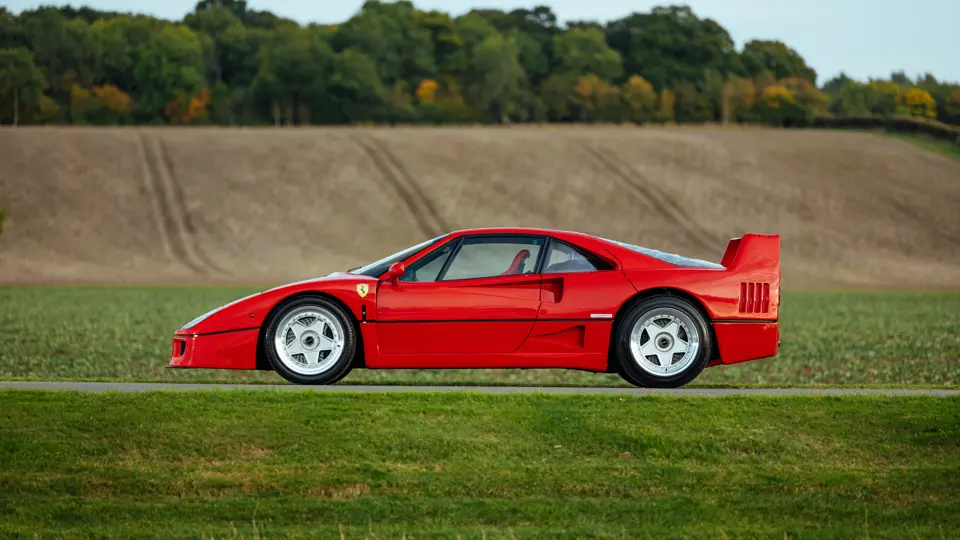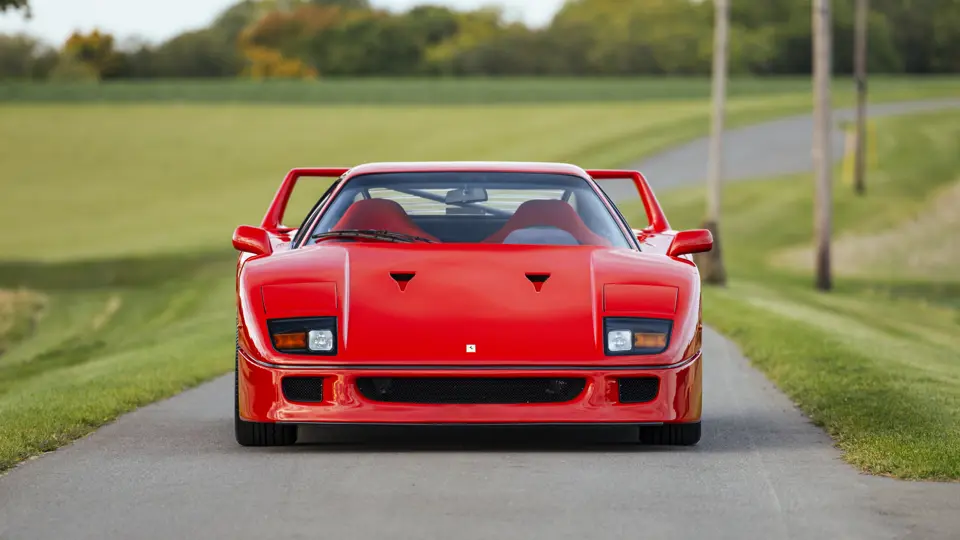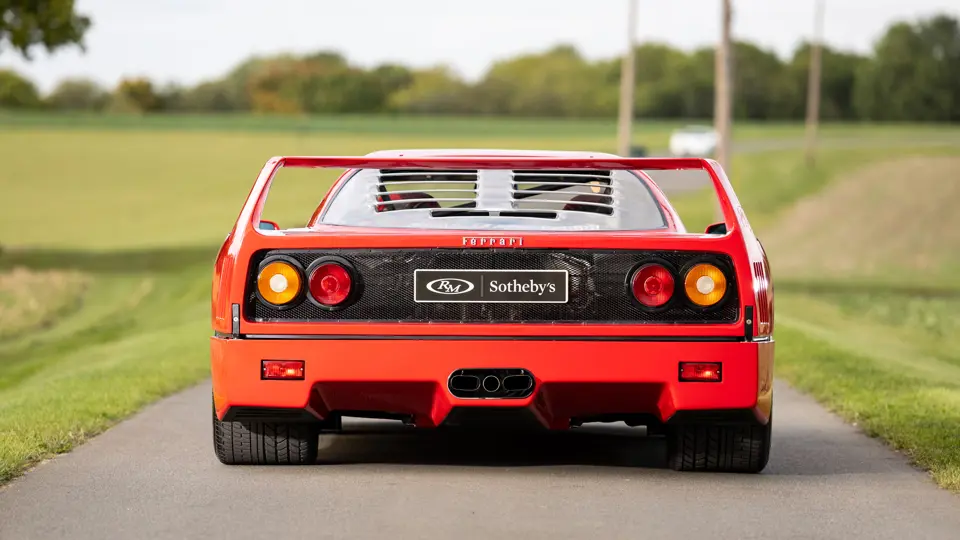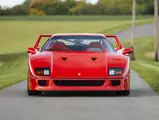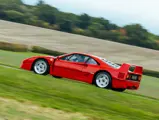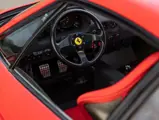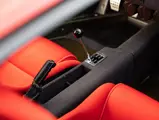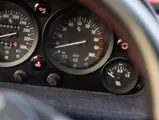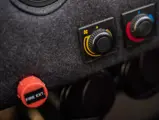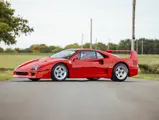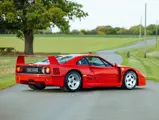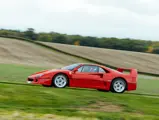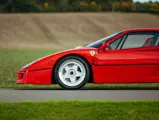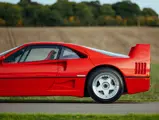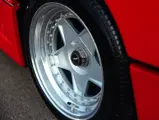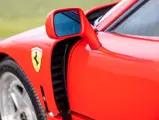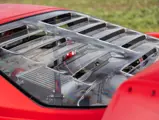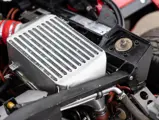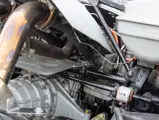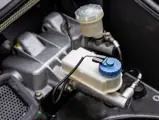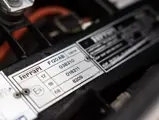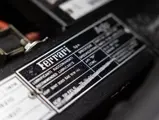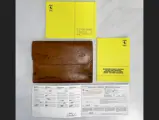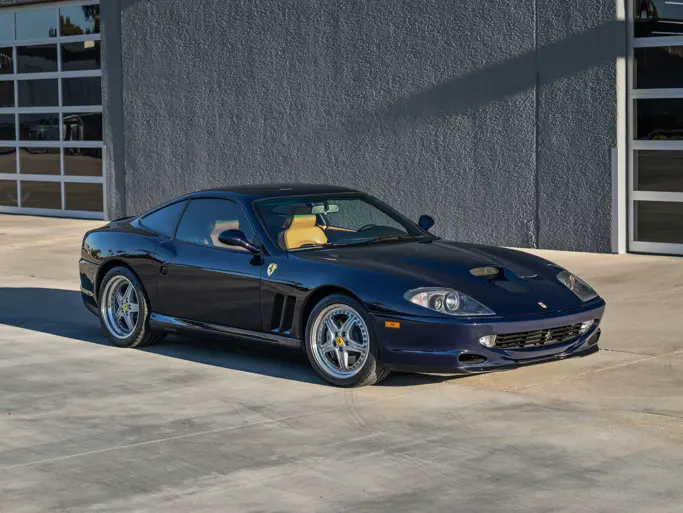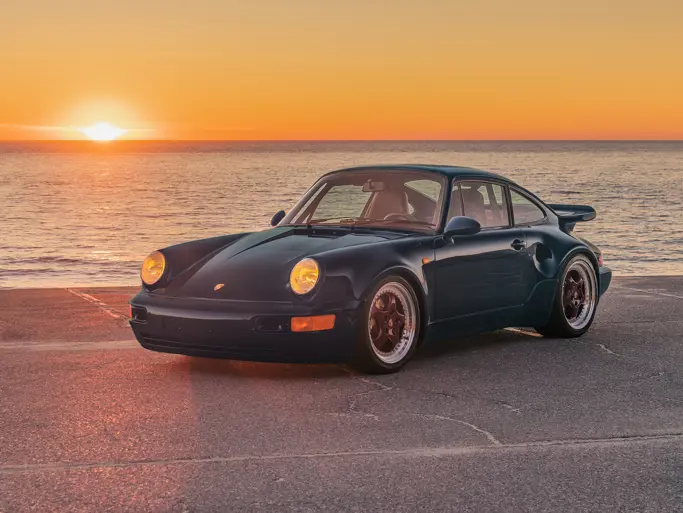
1991 Ferrari F40
{{lr.item.text}}
£1,411,250 GBP | Sold
Offered from The Gran Turismo Collection
{{bidding.lot.reserveStatusFormatted}}
- Offered after 25 years in The Gran Turismo Collection, with just two owners from new
- Maranello’s modern masterpiece; the definitive supercar
- Powered by a 478-horsepower 2.9-litre twin-turbocharged V-8
- The final supercar to be personally signed off by Enzo Ferrari
- A cat, non-adjust example; currently fitted with a straight-through exhaust
- Accompanied by its original Ferrari booklets and a partially complete toolkit
Providing one of the most visceral and raw driving experiences of the modern era, the Ferrari F40 is a legend that borders on the iconic. The final Prancing Horse-badged car to be overseen by Enzo Ferrari, its position in and significance to the Maranello story is undeniable—yet its brilliance belies a troubled gestation that could have so easily seen the project brought to a halt.
The supercar was built to mark the 40th anniversary of the Modena firm, and was initially intended to fly the flag for Maranello in the most thrilling category to ever grace international competition: Group B. Ferrari engineers prepared the flagship 288 GTO to compete in Group B at Le Mans, developing the supercar into a race-bred motorsport variant dubbed the 288 GTO Evoluzione. Like so many promising models, the brakes were nearly applied to the project following the demise of the formula, which was terminated in the face of a series of accidents. But rather than consign its engineers’ efforts to the pages of history, management decided to use the 288 GTO Evoluzione as the basis of an incredible new roadgoing supercar—the last ever Ferrari model to be personally blessed by Il Commendatore.
The F40 was built around the same 2,450 mm-wheelbase steel tube-frame chassis as the Evoluzione, though with the addition of extra bracing and bonded composite elements to increase strength and rigidity. Suspension was independent via four-wheel double wishbones—similar to that used on the 288 GTO—allied to coil-over Koni shock absorbers and four-wheel disc brakes. The bodywork, meanwhile, was the work of Leonardo Fioravanti, and comprised 11 separate panels formed of aluminium, carbon fibre, and Kevlar composite, with the final design honed and perfected in the wind tunnel at Pininfarina. As well as being incredibly strong, this radical bodywork contributed to an overall weight-saving of some 20 per cent, aided by cloth upholstery, drilled pedals, pull-strap door releases, and polycarbonate plastic for the windows—though later cars would receive wind-up side windows.
Beneath the F40’s futuristic wedge styling lay a version of the 288 GTO’s twin-turbocharged V-8, bored out to increase displacement to 2.9-litres and fine-tuned with an all-new ducted crankshaft, silver/cadmium con rod bushes, and hollow-stemmed valves. Feeding the fearsome engine were a pair of IHI turbochargers—turned up to 1.1 bar from 0.8 bar of boost—mated to Behr intercoolers, while power was transferred to the rear wheels via a five-speed transaxle with a gated gear stick. The result of Ferrari’s fettling was a staggering output from the type F120 040 engine of 478 horsepower and 425 lb ft of torque. Performance was suitably seismic, with a blistering 0-60 mph sprint time of just 3.8 seconds and a record-setting top speed of 201 mph—besting the terminal velocity of local rival Lamborghini’s flagship Countach, and the much-anticipated technical masterpiece and fellow Group B descendent Porsche 959.
Ferrari only intended to build 400 F40s, but when the car was unveiled to a rapturous reception at the Frankfurt Motor Show in 1987, thousands of potential customers expressed their interest. After initially being increased to 950, the final production total eventually reached some 1,315, though in a market rife with speculation, many examples were quickly hidden away in climate controlled private collections. Plenty, however, were driven as their makers intended, with period road tests giving prospective buyers a taste of what was to come. In 1988, Autocar’s Mel Nichols was able to put a press car through its paces at Fiorano, before concluding that “there’s little doubt it is the very personification of the term sports car”.
Chassis 8895 is a European market example that entered production on 8 March 1991 and rolled out of the Maranello workshops on 21 March. The Rosso Corsa supercar was delivered to its first owner—a Monaco resident—on 30 April 1991, via Sa.Mo.Car SpA in Rome, Italy, and was promptly registered on tourist plates. The supplying workshop carried out the car’s first service on 3 May, and by 11 May the F40 was recorded by marque expert Marcel Massini as being in Monaco—likely having been driven back to the principality. Clearly an owner who believed in enjoying the car, it made the journey back to the supplying dealer for servicing in August 1992 and March 1994, when the mileage was noted as 8,851 kilometres.
The Ferrari stayed in the care of its first owner until 8 July 1997, when it was bought by the consignor. It spent some time at his home in France before being imported to the UK, where it was road registered on 1 May 1998 and became part The Gran Turismo Collection. During the current ownership, this F40 suffered an accident which necessitated new front and rear clams, sourced from the factory, to be fitted. Benefitting from regular use, the odometer displayed 48,511 kilometres at time of cataloguing. The car is accompanied by its owner’s manual and service book, numerous invoices and MoT certificates, plus spare brake discs and seatbelts.
There are many factors that make the Ferrari F40 a special machine, from its record-setting top speed to its sublime, purposeful styling. But chief among them is Maranello’s unapologetic commitment to the basic elements that characterised the firm’s greatest sports cars. In the face of the technological wizardry of its rivals, Ferrari created a supercar that was almost shockingly simple—a combination of powerful mid-mounted V-8 engine, lightweight body, and rear-wheel drive—with a cabin that rejected creature comforts like leather seats and even door handles. Under the watchful eye of Enzo himself, Ferrari’s designers created, in essence, a race car for the road—a machine that came to epitomise the “era of excess” and redefine the very concept of a supercar.
For a generation who had its poster pinned to their walls, the Ferrari F40 represented the pinnacle of automotive design and performance. As the years have passed, the F40 has only grown in significance, representing the final hurrah of the unassisted, analogue supercar, and what many would regard as the quintessential Ferrari. With just two owners from new, 48,511 kilometres on the clock, and the benefit of regular use, this unmissable example offers you the chance to own the legend.
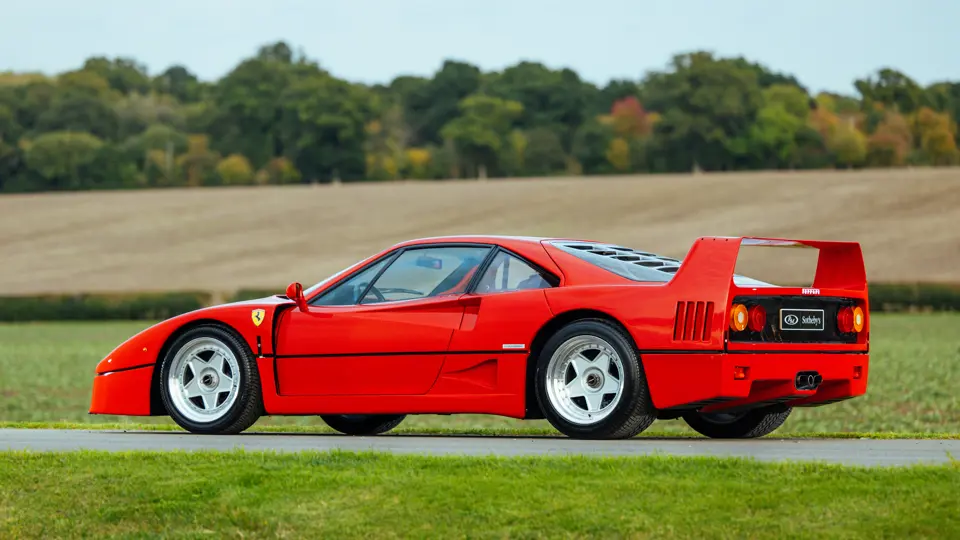

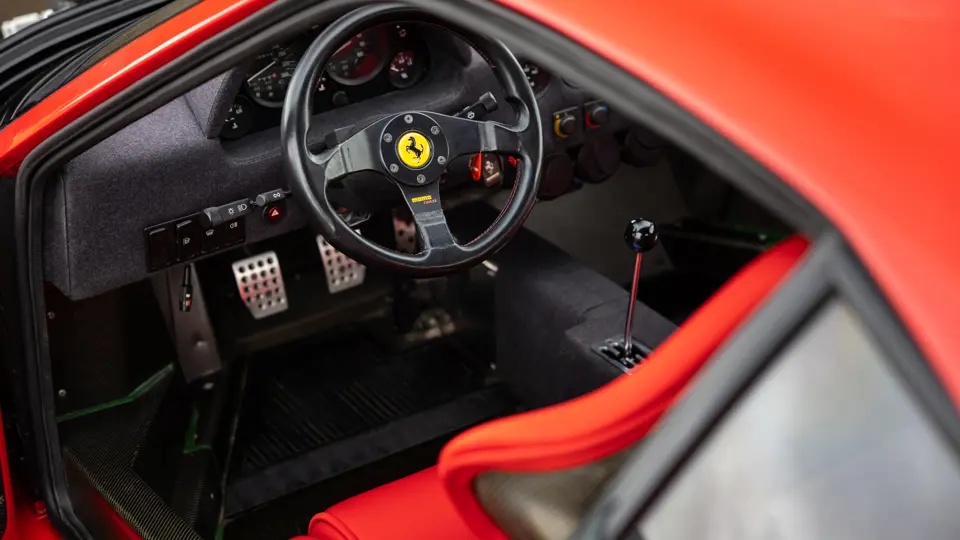

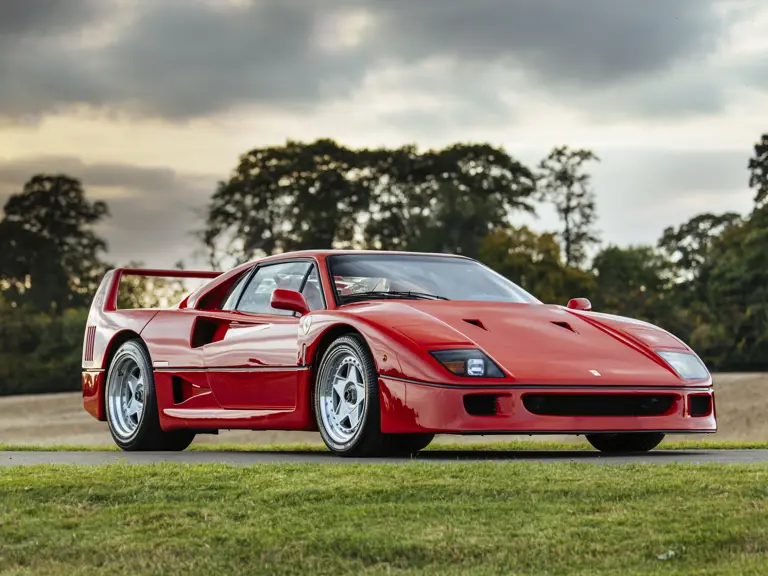


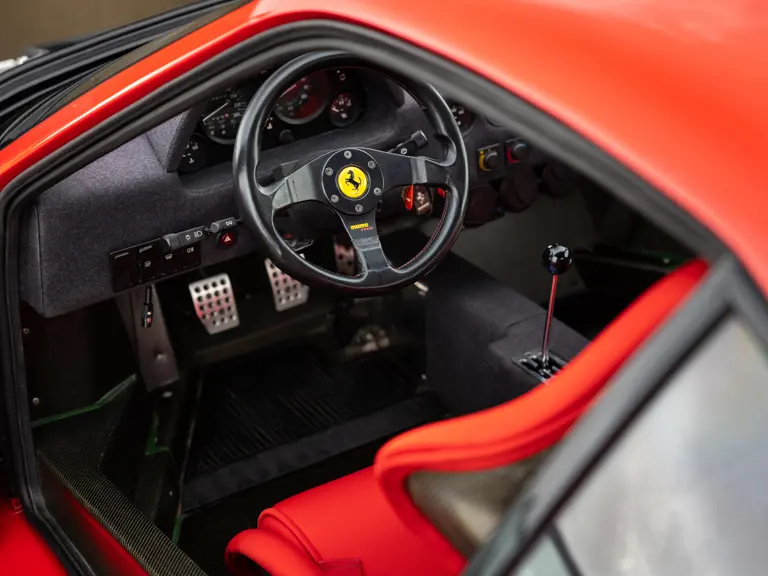
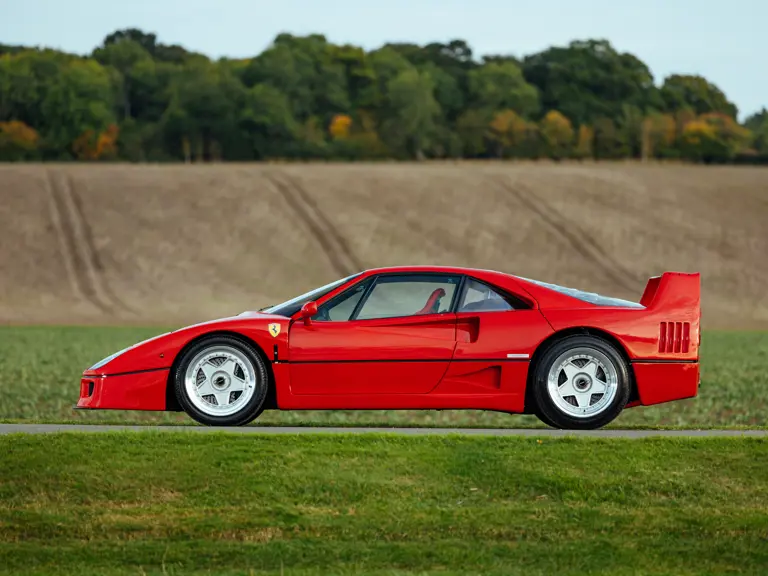
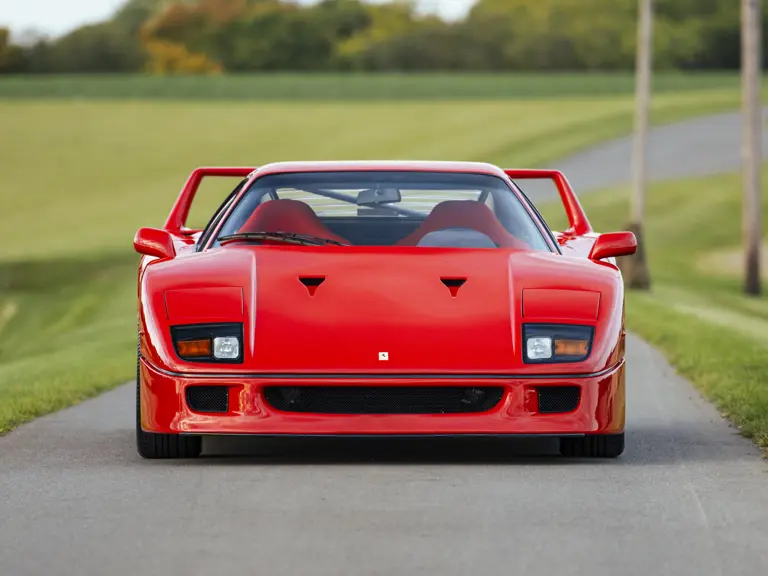
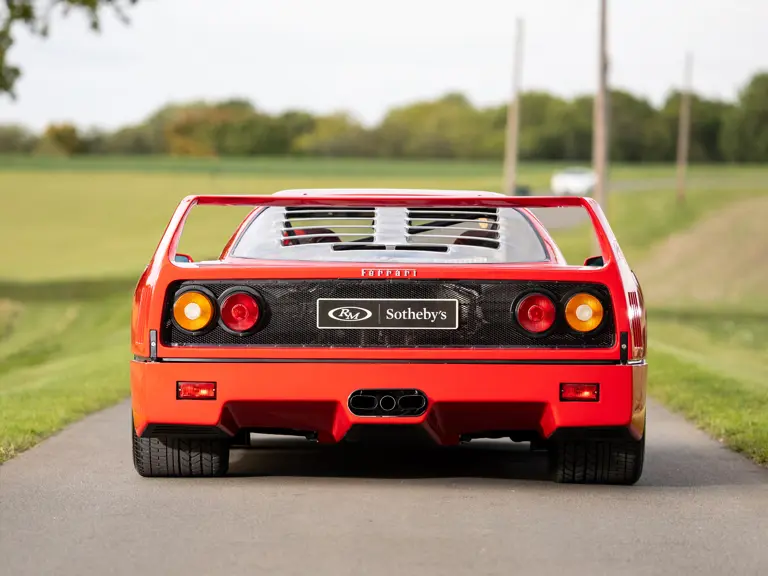

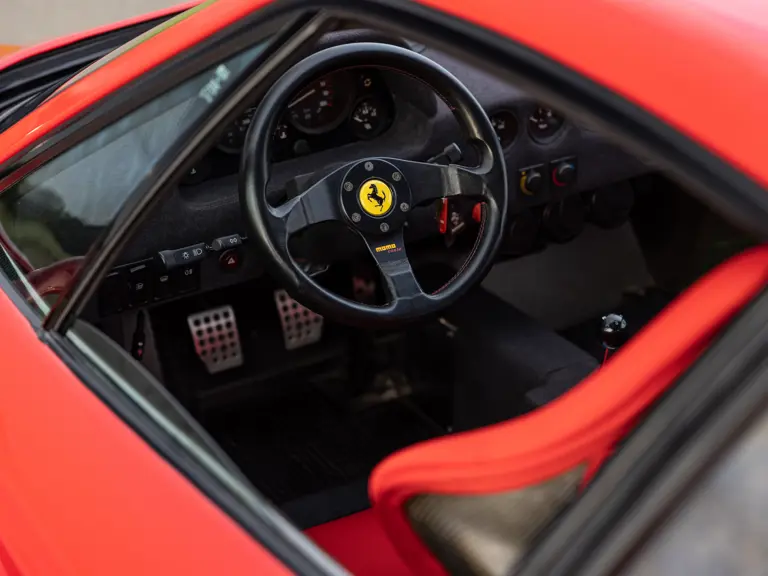
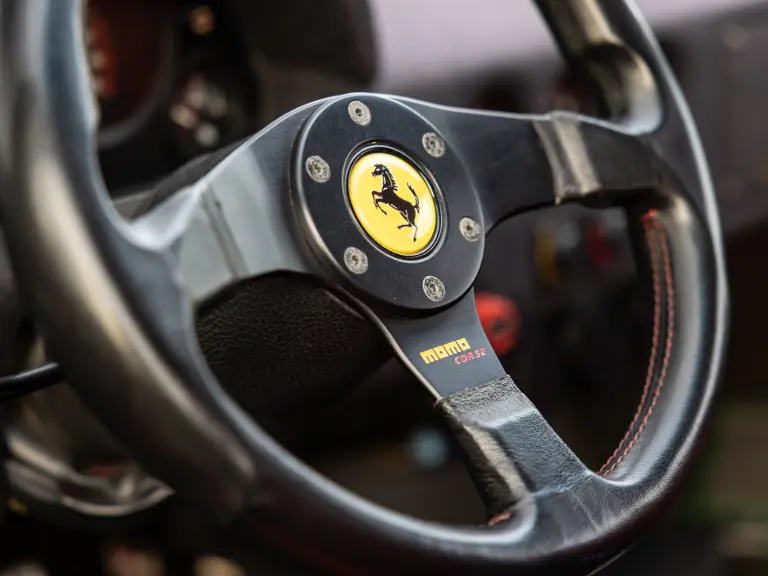
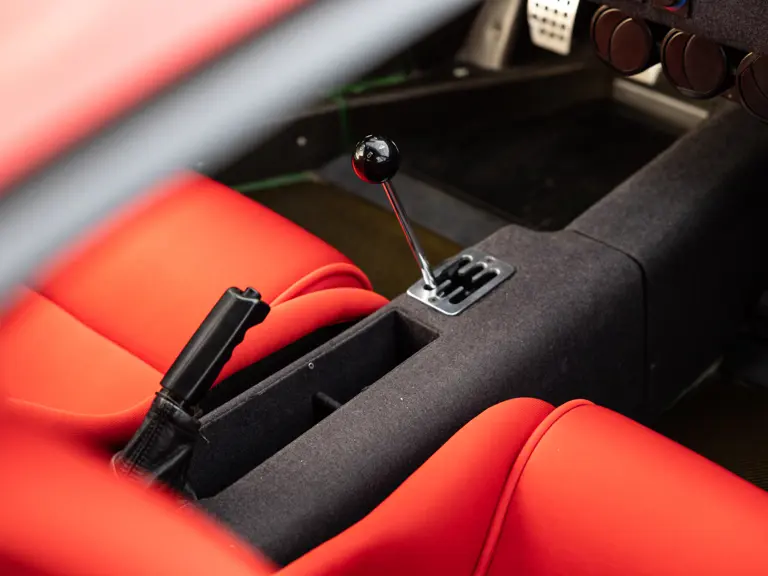

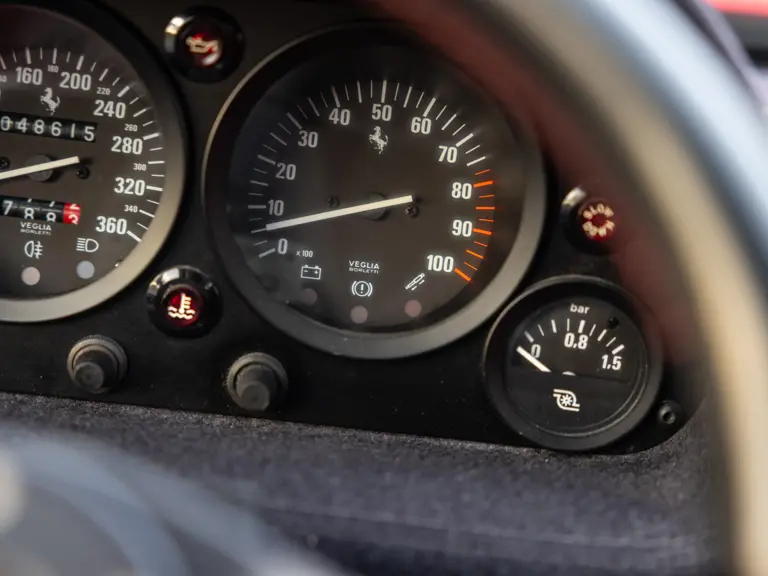
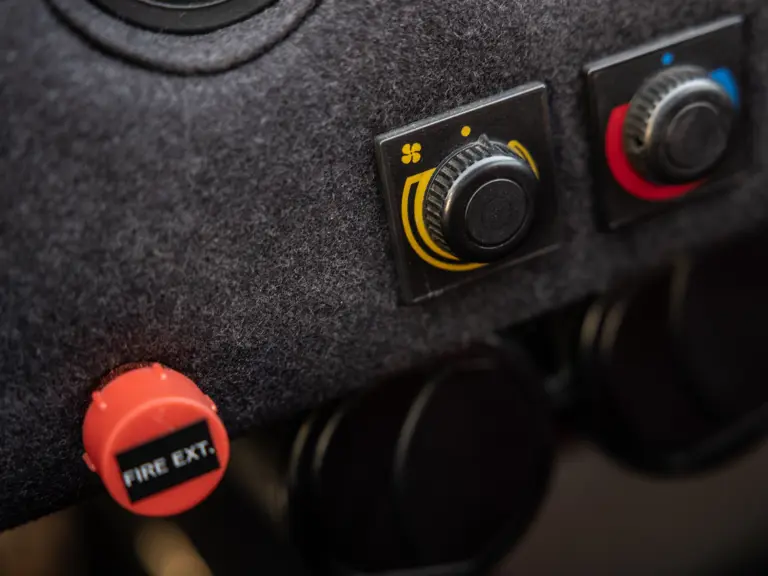
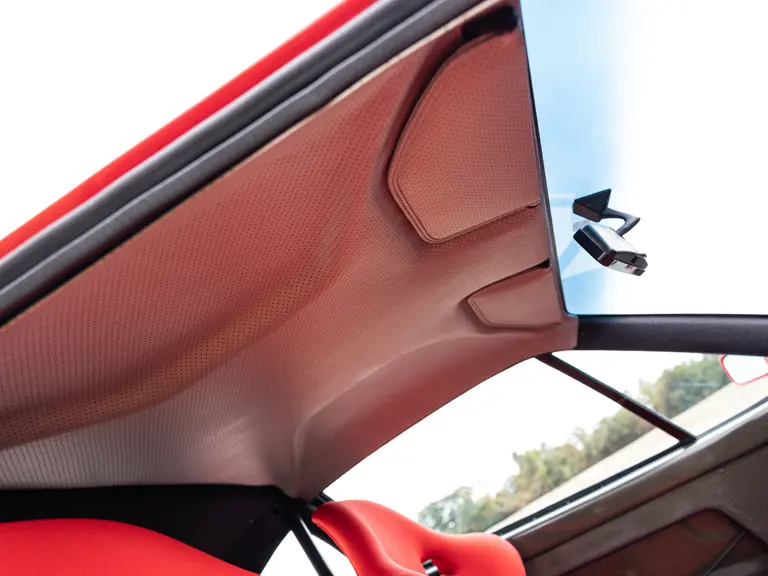

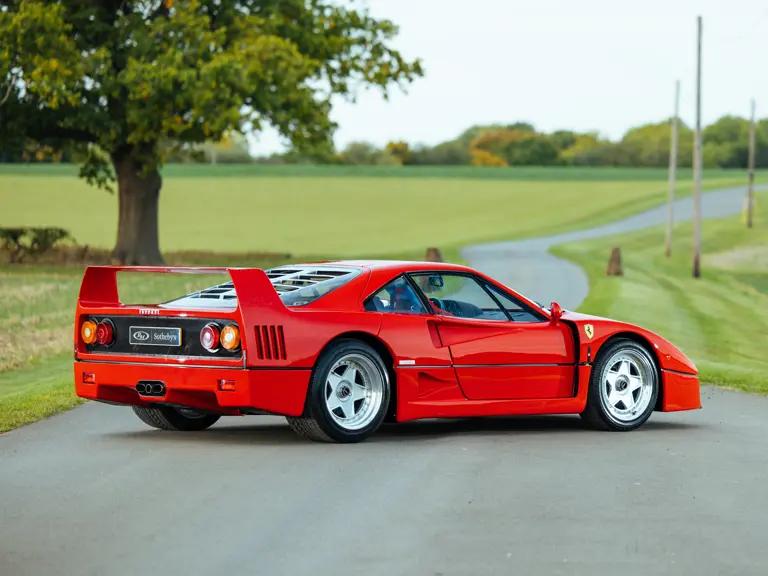
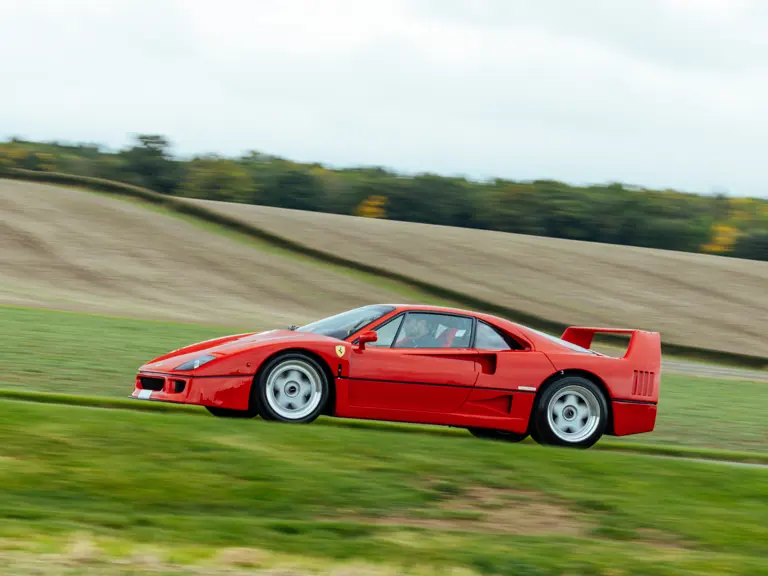
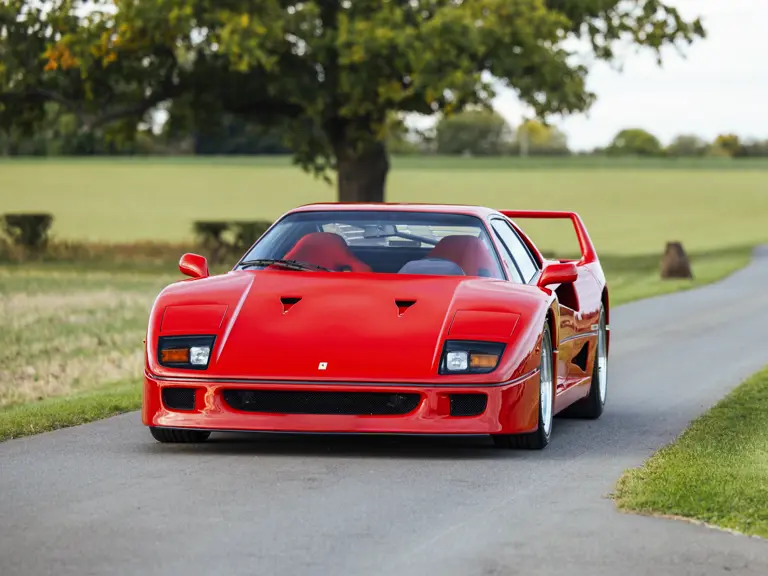
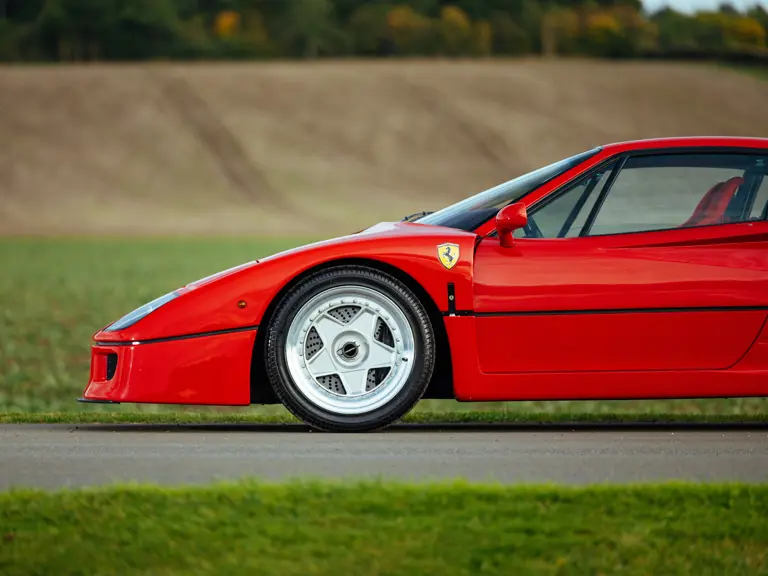
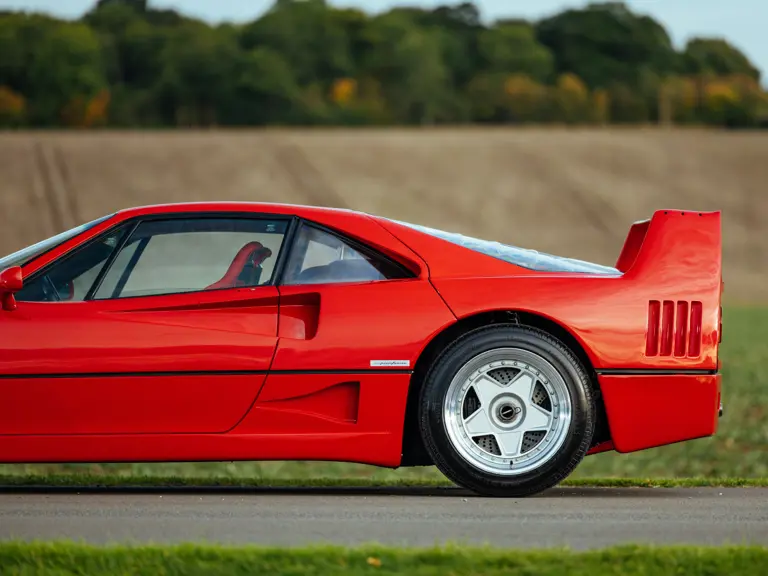
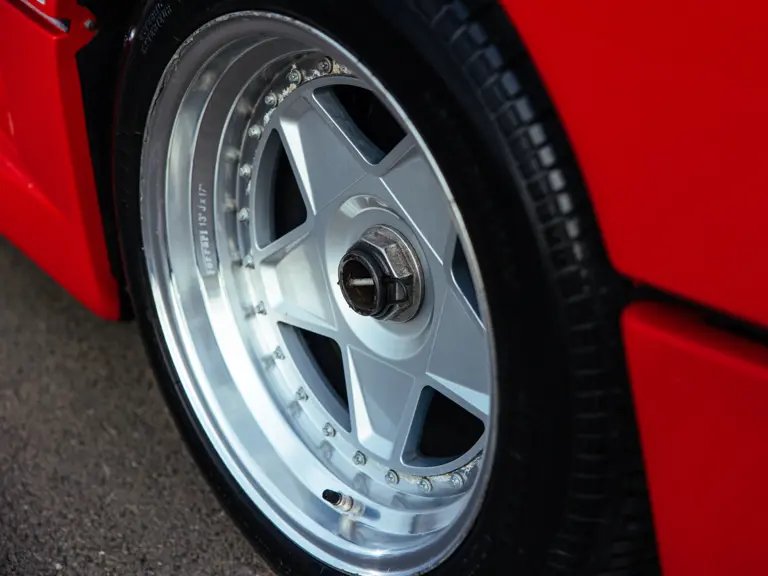
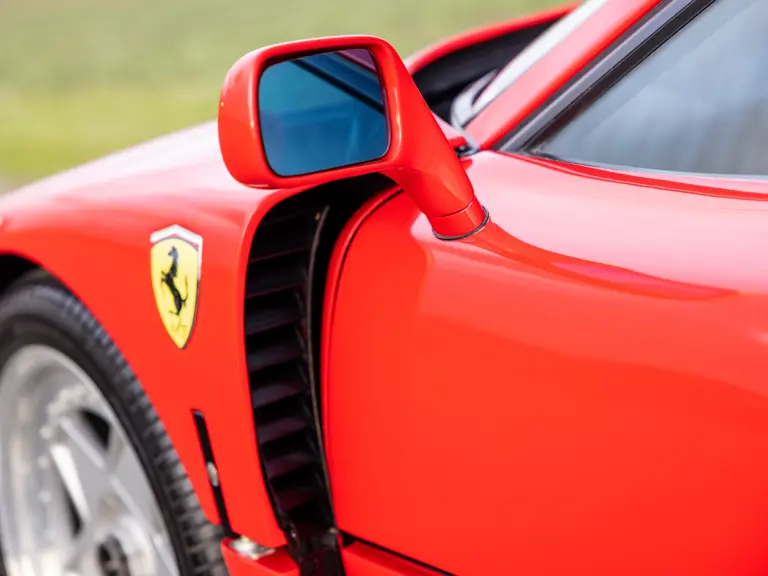
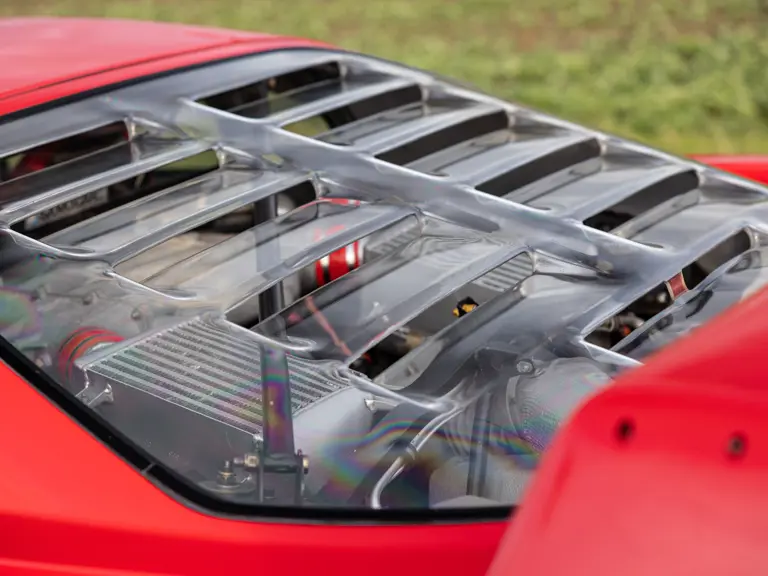

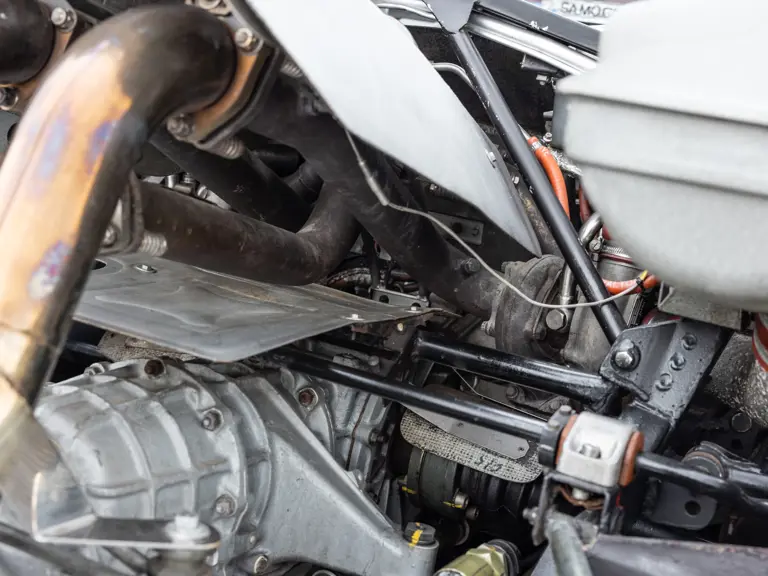
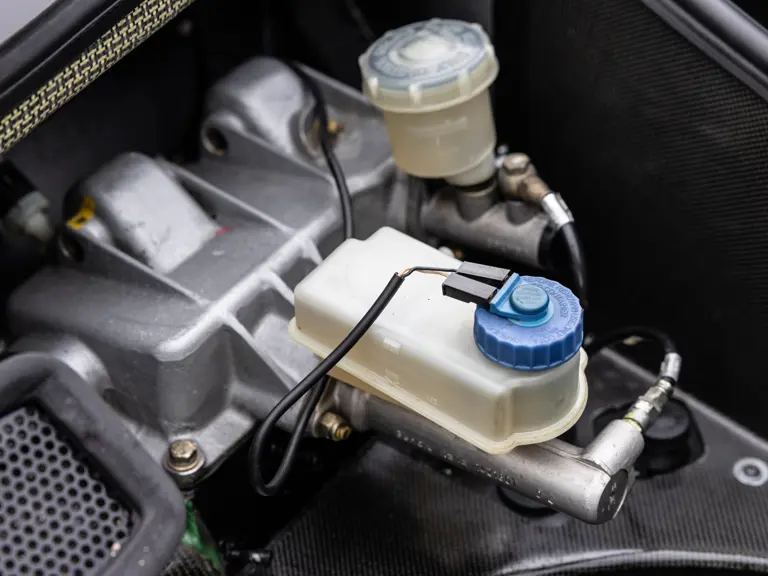
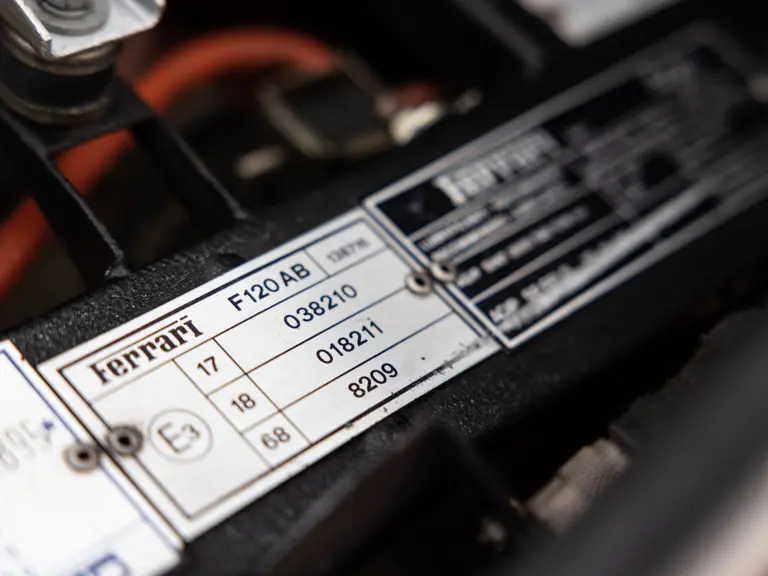
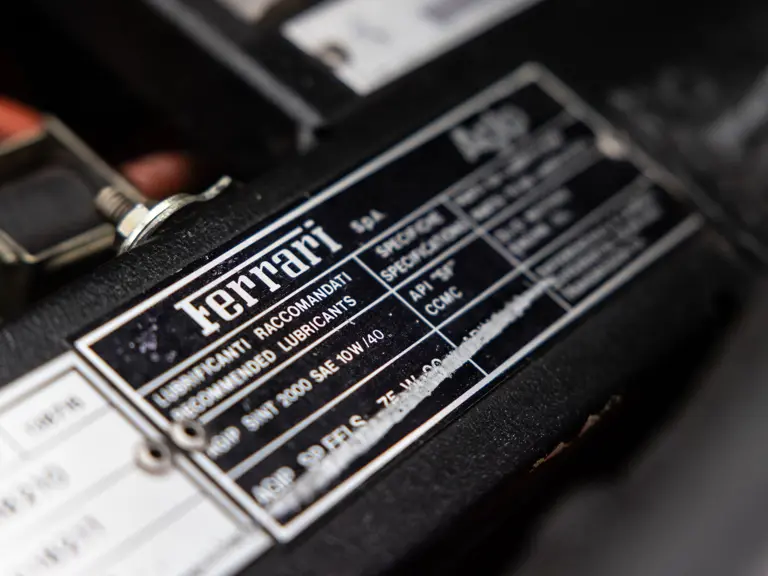
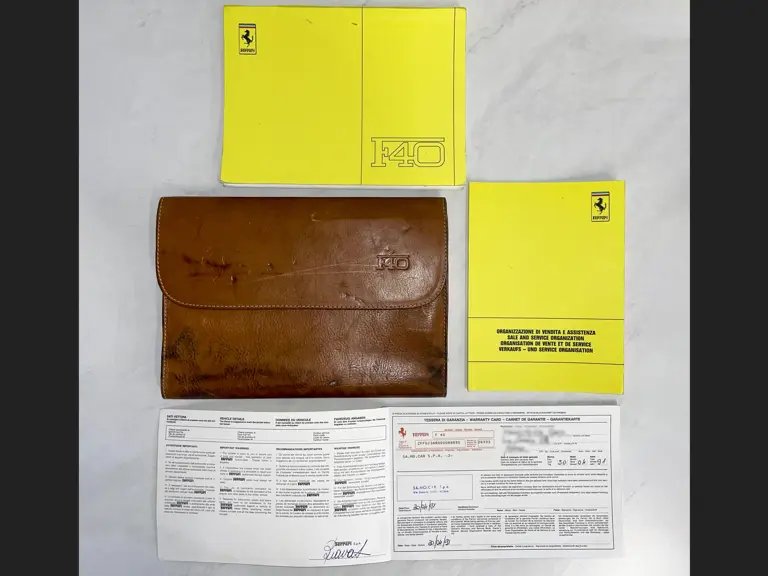
 | London, United Kingdom
| London, United Kingdom
